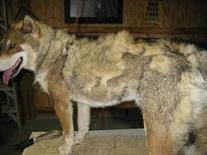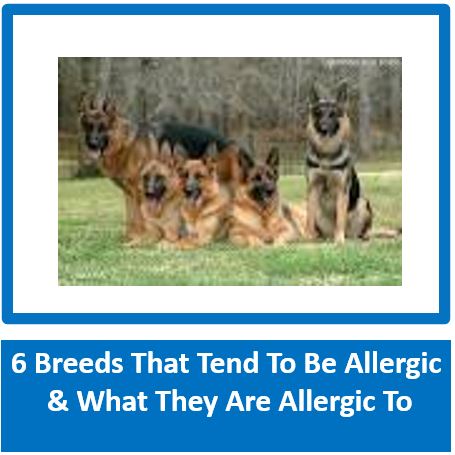"APRIL 23 - SALE NOW ON - R1850 FOR A LIMITED PERIOD"
EXCESSIVE DOG SHEDDING: WHEN YOU SHOULD WORRY
When Is Too Much Shedding A Sign That There's Something Wrong
By LAUREN LEONARDI www.petcarerx.com
When Is Too Much Shedding A Sign That There's Something Wrong
By LAUREN LEONARDI www.petcarerx.com

Dogs shed it's what they do. However, excessive dog sedding might be a cause for concern, as it can often be symptomatic of an underlying condition. Learn the signs of normal dog shedding and how it's different from illness-related shedding.
Shedding is part of everyday life with a dog. Excessive dog shedding, however, could be a sign of an underlying issue that could require attention and care.
What is normal shedding?
All dogs shed (except for the American Hairless Terriers, who are physically incapable due to their hairlessness). Most dogs shed year round, though some will “blow their coat” seasonally, once or twice a year, in a most spectacular fashion.
Year Round Shedding
Some dogs shed a lot, and some don’t. If your dog is healthy and regularly sheds a lot, it’s just part of who they are. As a loving pet parent, it’s your cross to bear.
Most normal shedding is the loss of the undercoat, with some regular loss of fur. Normal shedding will occur year round, and will be visible on your clothes, sofa, and around the house, but will not generally be visible on the dog’s body. If you do notice patches of fur missing, it is time for a trip to the vet.
Seasonal Shedding
Seasonal shedding occurs with some breeds, usually in the spring, but may also happen in the fall. Seasonal shedding occurs evenly across the whole body, and will happen every year on a cycle. This type of shedding is typical among cold weather breeds like Huskies. It’s not something to be alarmed about -- it’s perfectly natural and can be managed through daily grooming with an undercoat rake like the Furminator.
Shedding is part of everyday life with a dog. Excessive dog shedding, however, could be a sign of an underlying issue that could require attention and care.
What is normal shedding?
All dogs shed (except for the American Hairless Terriers, who are physically incapable due to their hairlessness). Most dogs shed year round, though some will “blow their coat” seasonally, once or twice a year, in a most spectacular fashion.
Year Round Shedding
Some dogs shed a lot, and some don’t. If your dog is healthy and regularly sheds a lot, it’s just part of who they are. As a loving pet parent, it’s your cross to bear.
Most normal shedding is the loss of the undercoat, with some regular loss of fur. Normal shedding will occur year round, and will be visible on your clothes, sofa, and around the house, but will not generally be visible on the dog’s body. If you do notice patches of fur missing, it is time for a trip to the vet.
Seasonal Shedding
Seasonal shedding occurs with some breeds, usually in the spring, but may also happen in the fall. Seasonal shedding occurs evenly across the whole body, and will happen every year on a cycle. This type of shedding is typical among cold weather breeds like Huskies. It’s not something to be alarmed about -- it’s perfectly natural and can be managed through daily grooming with an undercoat rake like the Furminator.
Managing Excess Shedding
Excess shedding can be difficult to manage as pet hair clings to furniture and upholstery. The best way forward is to brush your pet’s hair using the right brush. Depending on the type of coat it can be anything from a slicker brush to a glove brush. Also, consider adding healthy fat to your dog’s diet either through supplementation or whole food. You should also increase the frequency of bath during the hot summer months. This will help you rinse off the dead hair from your pet’s body, which will significantly reduce the number of hair floating around the house.
Excess shedding can be difficult to manage as pet hair clings to furniture and upholstery. The best way forward is to brush your pet’s hair using the right brush. Depending on the type of coat it can be anything from a slicker brush to a glove brush. Also, consider adding healthy fat to your dog’s diet either through supplementation or whole food. You should also increase the frequency of bath during the hot summer months. This will help you rinse off the dead hair from your pet’s body, which will significantly reduce the number of hair floating around the house.
When to be concerned about excessive shedding
Fur loss due to sickness is not really “shedding” per se, but rather loss of hair due to a factor other than the general rhythms of hair growth. In the case of adrenal diseases like Cushing’s disease, illness-related traumas, or infections, you’ll likely see spotty or patchy hair loss, as opposed to more general shedding. In some cases, as with a hypothyroid dog, the hair loss will be symmetrical, but isolated to certain parts of the dog’s body.
Unusual hair loss is one of the best indications that there’s an underlying health issue. If you notice any of the issues below, you should explore the reasons with your dog’s vet.
Causes of excessive hair loss in dogs
Excessive hair loss can be due to a variety of factors including allergies, hormonal imbalances, and other deficiencies.
Your dog’s hair could be falling out because of an allergic reaction to any of the following:
Imbalances in your dog’s thyroid can cause hair to become brittle and fall out. Hypothyroidism is a common condition among dogs, and can be readily treated with medication.
Other hormonal issues involving the over- or under-production of testosterone, estrogen, and progesterone can cause a dog to shed more than usual.
During pregnancy and lactation, many dogs will lose some hair. This is normal, but if it’s excessive, see a vet about supplements.
Dietary deficiency or overabundance
The absence of a well balanced diet could certainly result in unwanted hair loss. Blood tests can help a veterinarian determine if there’s a mineral deficiency or overdose.
If there’s been a big change in your home environment, your dog’s body could be reacting to stress. Never rule out a dog’s emotional response. Sometimes dogs have physiological responses to a change in homes, familial conflict, or a death in the family. In this case, some extra TLC and a few supplements may help your dog’s hair grow back.
A variety of skin conditions can affect hair loss including mange, mites, dermatitis, ringworm, and bacterial or fungal infections. If hair loss is spotty and patchy, with rough or tender skin beneath, see a vet. Treating the skin condition will generally resolve the fur issue.
- Fur Loss vs. Shedding
Fur loss due to sickness is not really “shedding” per se, but rather loss of hair due to a factor other than the general rhythms of hair growth. In the case of adrenal diseases like Cushing’s disease, illness-related traumas, or infections, you’ll likely see spotty or patchy hair loss, as opposed to more general shedding. In some cases, as with a hypothyroid dog, the hair loss will be symmetrical, but isolated to certain parts of the dog’s body.
- Troubling Hair Loss in Dogs
Unusual hair loss is one of the best indications that there’s an underlying health issue. If you notice any of the issues below, you should explore the reasons with your dog’s vet.
- Fur has become dry and brittle
- Fur that breaks or falls out unevenly
- Bald patches or clumps of lost hair
- Hair loss accompanied by another skin problem
- Dog is tender to the touch, or resists being touched where they’re losing fur
Causes of excessive hair loss in dogs
Excessive hair loss can be due to a variety of factors including allergies, hormonal imbalances, and other deficiencies.
- Allergies
Your dog’s hair could be falling out because of an allergic reaction to any of the following:
- Food: An allergy to a single ingredient in a kibble or canned food can cause hair loss
- Medications
- Something in the environment like a household cleaner, or a dog bed
- A new soap or shampoo
- Pest bites, which can be addressed through monthly pest prevention
- Hormones
Imbalances in your dog’s thyroid can cause hair to become brittle and fall out. Hypothyroidism is a common condition among dogs, and can be readily treated with medication.
Other hormonal issues involving the over- or under-production of testosterone, estrogen, and progesterone can cause a dog to shed more than usual.
During pregnancy and lactation, many dogs will lose some hair. This is normal, but if it’s excessive, see a vet about supplements.
Dietary deficiency or overabundance
The absence of a well balanced diet could certainly result in unwanted hair loss. Blood tests can help a veterinarian determine if there’s a mineral deficiency or overdose.
- Stress
If there’s been a big change in your home environment, your dog’s body could be reacting to stress. Never rule out a dog’s emotional response. Sometimes dogs have physiological responses to a change in homes, familial conflict, or a death in the family. In this case, some extra TLC and a few supplements may help your dog’s hair grow back.
- Skin Conditions
A variety of skin conditions can affect hair loss including mange, mites, dermatitis, ringworm, and bacterial or fungal infections. If hair loss is spotty and patchy, with rough or tender skin beneath, see a vet. Treating the skin condition will generally resolve the fur issue.





